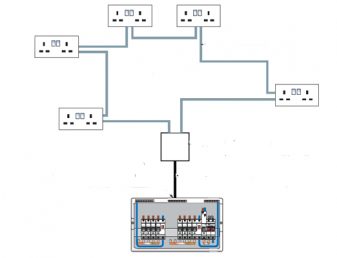This article provides some simple guidance on how to identify extraneous conductive parts to help you avoid the unnecessary installation of protective bonding conductors.
It should be appreciated that exposed metallic parts not forming part of the electrical installation are not always extraneous conductive parts as defined in Part 2 of BS 7671.
Therefore, as explained in this article, to avoid the unnecessary installation of protective bonding conductors, it is important to establish whether a particular item is indeed an extraneous conductive part, particularly as the protective bonding of an item that is not an extraneous-conductive-part might, under fault conditions, introduce a hazard.
Definition of an extraneous conductive part
In accordance with BS 7671, an extraneous conductive part is one that is:
- conductive
- liable to introduce a potential, generally Earth potential
- not forming part of the electrical installation
Regulation 411.3.1.2 lists items that require protective bonding, but it should be appreciated that this list is neither exhaustive nor can it be assumed that all the items identified will always fall within the definition of an extraneous-conductive-part.
Introducing a potential
Although only a conductive part which does not form part of the electrical installation concerned may be an extraneous conductive part, because such an item is conductive does not necessarily mean it is liable to introduce a potential. In order to present a risk of electric shock the item must be at Earth potential (that is, in contact with the general mass of the Earth) and, crucially, it must also be accessible (Fig 1).
A conductive part, such as a metal duct or pipe, that is covered with, or enclosed by, insulating material, or an item that is out of reach (that is, at a distance where simultaneous contact with either exposed-conductive-parts or extraneous-conductive-parts is not possible) will not introduce a potential. This also applies where a high electrical resistance exists between the item and its source of potential (Earth).
For example, under normal circumstances, the insulating properties of a plastic pipe will prevent a potential from being introduced by the medium inside the pipe (water, steam, oil etc.).
Owing to the length of the plastic pipe, the high resistance limits the touch voltage to a safe value and, for this reason, a water installation pipe with more than a metre of plastic pipe on the consumer’s side of the main stopcock will not normally be considered to be an extraneous-conductive-part.

Items not considered to be extraneous conductive parts
Normally metallic items such as suspended ceilings and floors, are insulated from Earth and are therefore deemed to be isolated metalwork and not extraneous-conductive-parts. Similarly, an external component such as a metal staircase may be fixed to the building structure but, owing to the manner of fixing, it may be considered to be isolated metalwork.
This also normally applies to internal structures such as filing cabinets, racking systems, and metallic tables and work surfaces, such as those found in commercial kitchens, and similar items (Fig 2).
Determining an extraneous conductive part by measurement
To assess whether Earth potential is liable to be introduced by a conductive part that is connected to the general mass of Earth through a resistance, a measurement should be made of the resistance (RCP) between the conductive part and the main earthing terminal of the installation.
If the resistance R CP is such that:


The conductive part can be considered not to be liable to introduce Earth potential.
Where:
R CP is the resistance between the conductive part concerned and the main earthing terminal of the installation in ohms.
U CP is the nominal voltage to Earth of the installation in volts.
I CP is the value of current through the human body (or livestock) which should not be exceeded in amperes (30 mA).
Introducing a hazard
Applying protective bonding to a conductive item which is not an extraneous-conductive-part might lead to the risk that under fault conditions these items may become raised to the fault voltage for the time it takes the protective device to disconnect.
Consequently, persons may be exposed to a touch voltage that otherwise would not have existed. For example, the protective bonding of an electrically isolated metallic window frame may introduce a risk of exposing a window cleaner to a potential that prior to bonding never existed.
Therefore the protective bonding of such items should not be undertaken.






